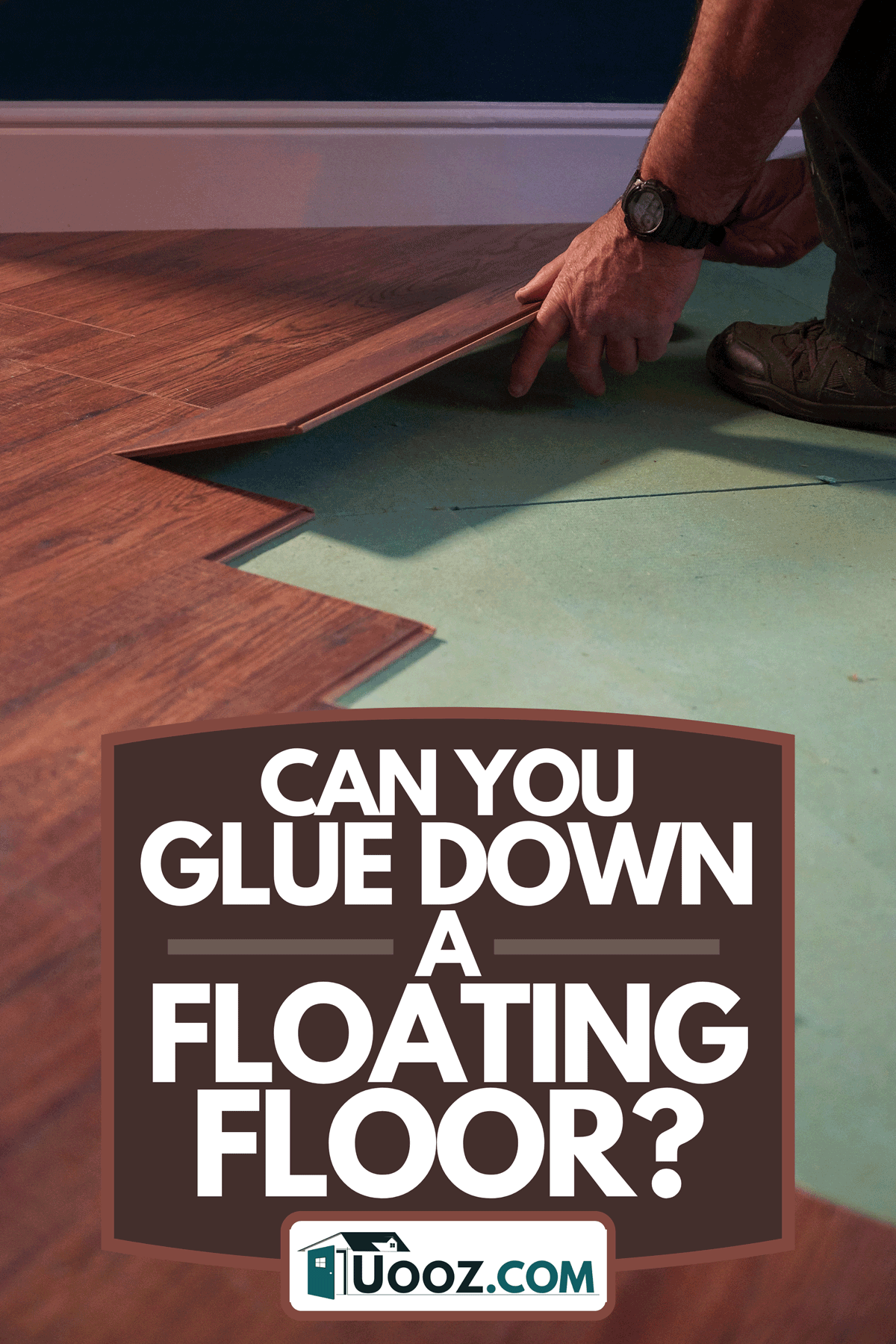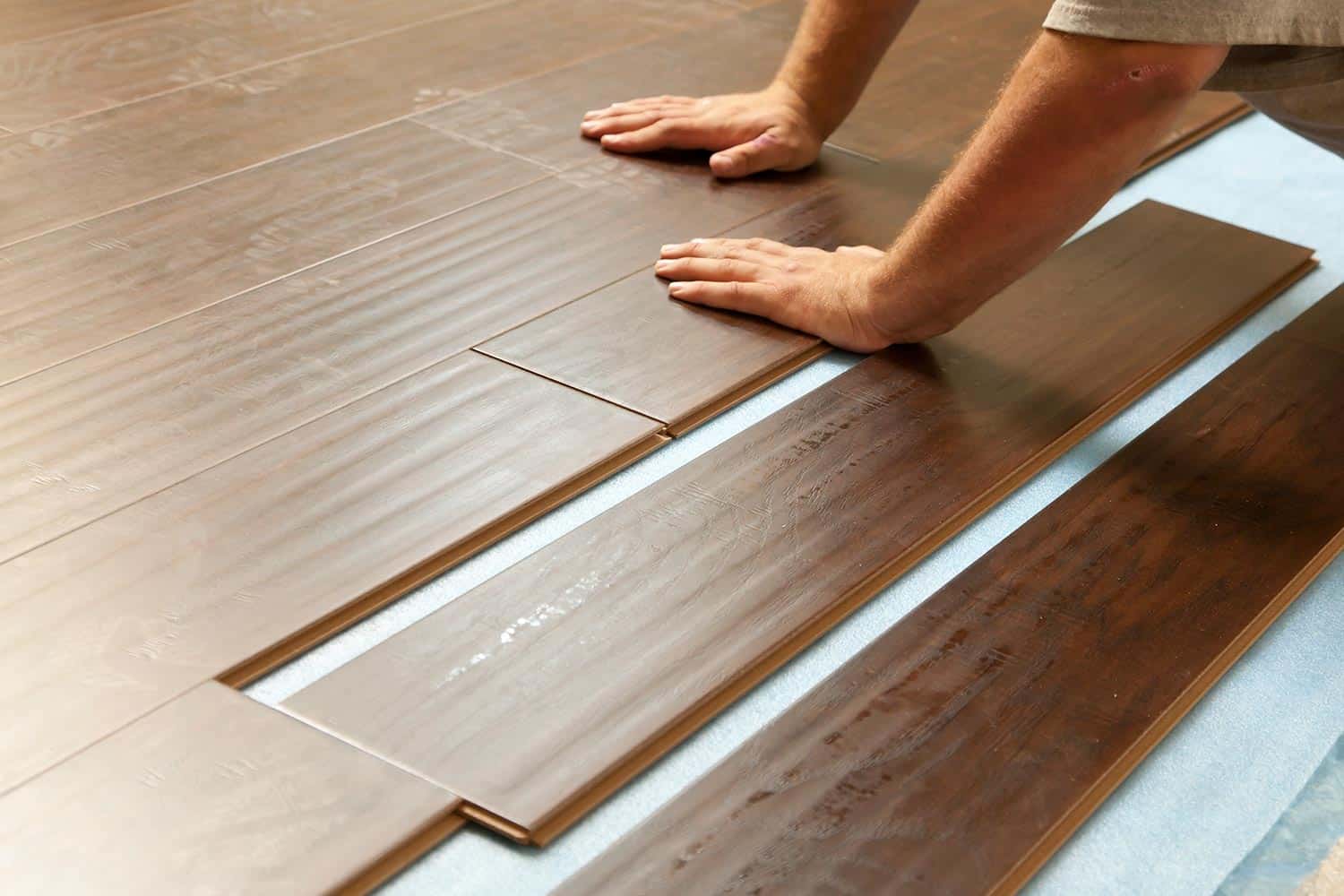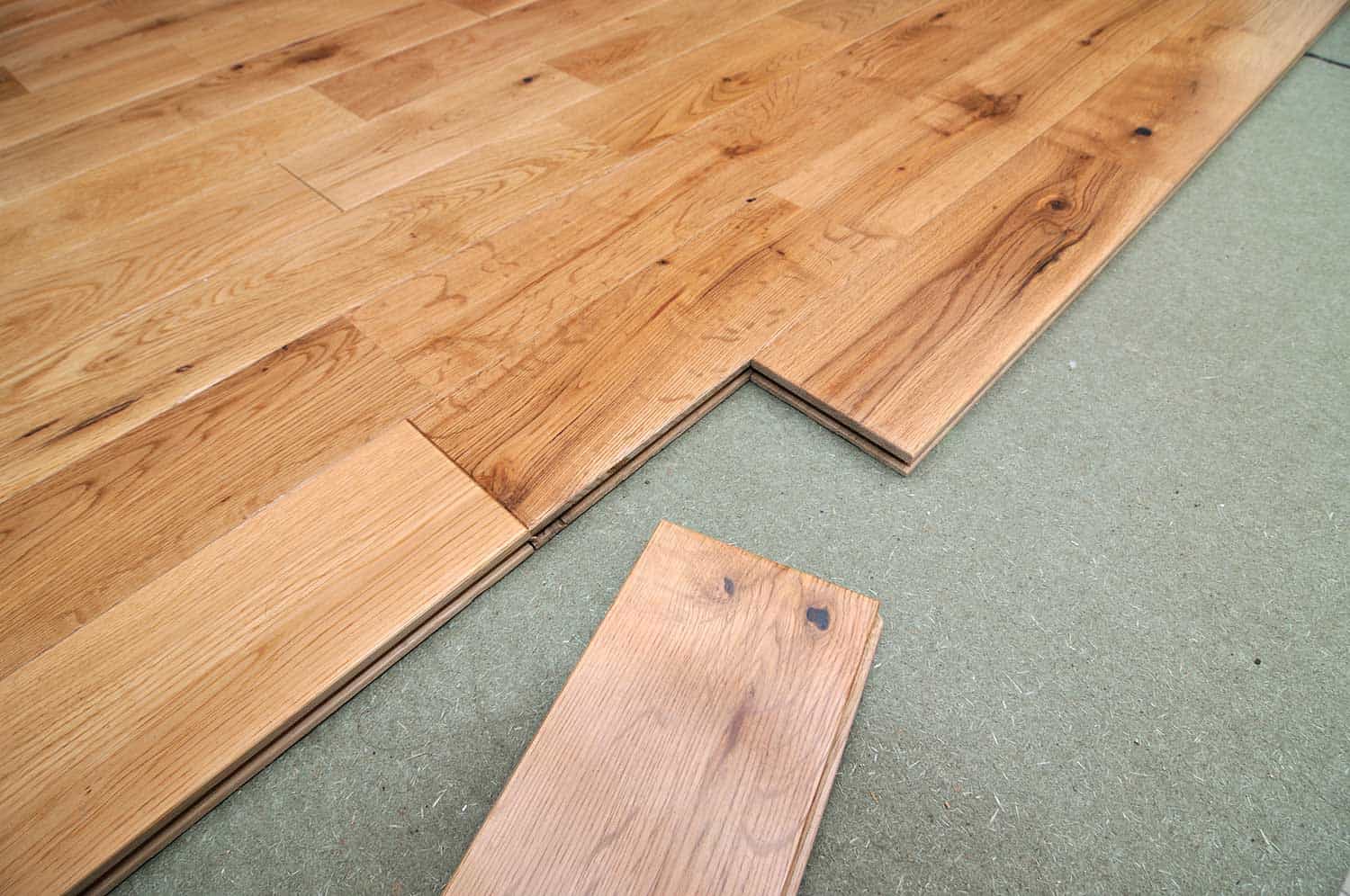Floating floors are a clean and cost-efficient way to spruce up your home. As you begin to research, you'll see a lot about floating floors and how to install them. What's the catch to their ease of use? Do they need glue to hold in place? No worries, we've done all the research to bring you the answer.
The selling point of floating floors is that they do not have to be glued down. Floating floors are designed with a tongue and groove locking system that secure the planks together. You can add small amounts of glue into the connecting joints for extra security, but it's not necessary. Laminate, vinyl, and engineered floors are the main material choices, and all come with a recommendation not to use glue.
Laminate, vinyl, and engineered floating floors are becoming a popular choice to give your home a luxurious look without the high price tag. We'll take a look into the advantages and disadvantages of floating floors, as well as more ways to secure this type of flooring. Keep reading to find out about your next DIY project!

Floating Floors
As homeowners start to make extensive renovations around the house, the flooring will be a crucial point. The three common types of floating floors, laminate, vinyl, and engineered, all come with the fit and lock installation system. There will be a groove on one edge for the next plank's tongue to "click" into. Due to the plank boards holding themselves, gluing them down isn't needed anymore.
All three types of flooring are multi-layer boards. The laminate and vinyl are compressed synthetic materials, and the engineered wood is real wood fibers and shards compressed together. Each material is very durable and can last you for years.
Advantages
- Durable
- Not expensive
- Easy to clean
- Easy to install
- Easy to replace small sections
- It can be used in any room
- Hold up against the foot traffic
Disadvantages
- Can shift over time
- May warp in high humidity
- Will peak without enough breathing room
- Can amplify sound
- Hard on feet without padding underneath
- Need subfloor to be perfectly even
No matter which room you plan on installing the flooring into, you'll want to open the boxes and let the boards get accustomed to the room for at least 5-7 days. Each room will have different temperature and humidity levels throughout the day, and leaving the boards out will allow them to experience this. The planks may warp ever so slightly, but it's better to have that happen in the box instead of after the installation.
To find out how much material you'll need for a room, take the length times the width and then add 10% to it for those "whoops" moments. You'll want to have all parts of the original flooring taken out, such as the baseboards and any spacers. Then make sure all the debris is cleaned up to get started!

What happens if you glue down a floating floor?
Since floating floors aren't meant to be glued, you could end up damaging them in the long run. To start, if the planking you buy comes with a warranty, gluing them down during installation will most likely void it. Also, it won't be as easy to fix smaller sections with the entire floating floor glued down.
Too much glue between the floor and subfloor will take away the breathing room needed for the natural expansion of the flooring materials. Without the recommended spacing, you could run into your floor warping, peaking, and forming gaps. Gluing down a floating floor adds another step for you that isn't often beneficial.
On the other hand, you can still glue the seams of the flooring together. Gluing the seams creates a stronger bond from plank to plank. This also means that there's less chance for moisture to get into the seams and discourages mold growth.
How do you secure a floating floor?
There are three ways to have a secure floating floor, and doing all three will have you in top shape. Joining the boards securely, gluing the seams, and adding a sublayer of polyethylene foam. First, follow the manufacturer's instructions. This will be the best guide to making sure your floors are completely locked into place.
Second, if the connection still doesn't feel secure enough, add a few beads of wood glue to the groove. Always make sure to wipe excess glue away at the time when it's still wet to save you from picking at it later! Third, adding a layer of polyethylene foam can help level out uneven floors and give your planks a better surface to rest on.
Click here to view this floor glue on Amazon.
How to allow space for expansion
Because floating floors can shift over time, it's a good idea to make sure they have some wiggle room. Begin by adding a flooring spacer between the wall and the short edge of the starting panel; this will also help create a stronghold for the rest of install. Then, continue the spacers every six inches on the long edges throughout.
Can you glue down a floating laminate floor?

In short, it is not the best idea to glue floating laminate to the subfloor. The only exception mentioned has been in the case of gluing the flooring to stairs. Laminate flooring is made of synthetic materials and is designed to have the appearance of wood. The surface is easy to clean and is water-resistant but not 100% waterproof.
How do you glue floating laminate flooring?
While the entire floor may not need to be glued down, you could glue down the boards to stairs. This will be the case if two or fewer pieces of floating floor are needed per step. Floating floors get their strength in numbers, and stand-alone pieces will need more security.
Still, allowing your materials to stay out for a few days, measure twice and cut once for the needed amount. Stairs often have edge protectors put in place and will cover either the gap or groove side sticking out. Use a construction strength wood glue to adhere the plank to the surface of the stairs and put a weighted hold on it while it cures. Now you'll be able to add any finishing touches, such as an attached stair tread.
Click here to view these stair treads on Amazon.
Can you glue down a floating vinyl floor?
There is a gluable form of vinyl flooring, but it is not a floating floor. These types of flooring planks will connect to the subfloor for security instead of each other. Floating floors are not meant to be glued down due to their specifically designed tongue and groove system.
In summary
Floating floors' specific locking design means they do not need to be glued down. If you're a DIYer and want to bump up your home's look while being friendly on the budget, this is the one for you. Depending on the size of the room, and installation could take you around 2-3 days and result in endless compliments. Now it's time to choose what style to go with!



Can a vinyl floating floor that was all glued down and now popping up be fixed. When we picked out the flooring the builder asked if I wanted it glued or make a click sound when you walk on it. I said glue not knowing any difference. The builder said since it’s over a year we are on our own. Can this be fixed as we cannot afford a brand new floor. We our both retired and in our 70’s